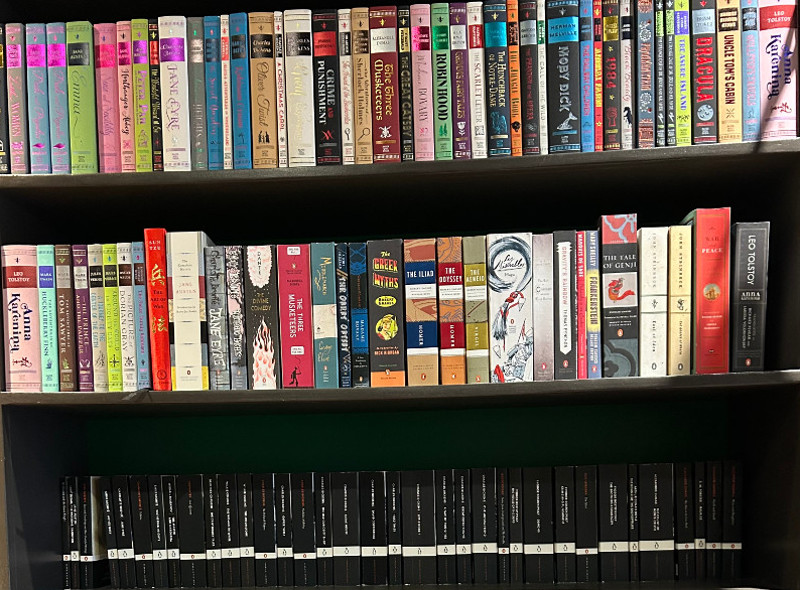Submitted By Ryan Scott
Since opening the Book Hive in June, I’ve seen a good portion of sales come from the classics section. Readers are either beginning their lifelong reading journey with Jane Austen and Charles Dickens or continuing or revisiting it. Yet many readers remain hesitant about reading the classics: school has left them with a bad taste for old books that feel too longwinded to invest time into.
To first avoid this problem, start with a shorter classic and develop a taste for a particular author without clocking a lot of reading hours. Short novels like Fitzgerald’s The Great Gatsby or Orwell’s Animal Farm are popular choices, and Hemingway is a master of the short story. While 20th century authors’ styles may be more accessible than the purple prose of their forebears, even 19th century writers like Tolstoy and Dostoyevsky – known for their paper cinderblocks – have novellas like The Death of Ivan Ilyich or Notes from the Underground that give less-patient readers a taste of literary greatness without committing them to a full-course word meal.
For those wishing to plunge into longer works like Hugo’s Les Misérables or Melville’s Moby Dick, but who maintain trepidation over the task, there is another approach to consider.
Remember, these tomes were often published in monthly magazines that would release just a few chapters per issue. A novel like Elliot’s Middlemarch therefore could take years to reach its conclusion. Readers of the era embraced these unfolding tales the way modern audiences enjoy serialized weekly TV shows, and this approach to reading remains effective today. Just taking in a chapter or two per week (or a few pages per day) would keep one roughly on track to absorb these novels in a way on par with their original release schedules. This slow burn process lets readers jump in and out of other books without feeling tied to what could otherwise be a daunting obligation. If 800 pages of Crime and Punishment seems too much to take on its own, why not break it up with dips into a romance novel, memoir, or some other piece of literary entertainment? After all, reading should be a polyamorous experience, the fun of it shared among as many books as a reader can handle at once.
Another hack for enjoying classics is to pair the book with companion pieces: a biography of the author, media exploring the history, locations, and themes of the classic, or other novels that parallel the ideas of the main read. If you tackle Homer’s Iliad, try also learning about Greek mythology and the history of Troy, or read modern novels that tell the tale from other characters’ perspectives. Some may also enjoy dissecting books by highlighting passages or scribbling their thoughts into a notebook. All these immersive techniques can enrich the context of any classic novel.
There is no right or wrong way to read. The goal is to give these books a chance by shrugging off the stresses of essays, speeches, and other classroom horrors that blemished many readers’ perceptions of classic literature. Just crack one open and read it at any pace, using any method. As Italo Calvino wrote, “A classic is a book which never exhausts all it has to say to its readers.” One can return to them over and over and embrace them for what they are: the greatest stories ever penned. That, after all, is what keeps them classic.
Many classics old and new can be found at the Book Hive at 84 Sykes St. N.













